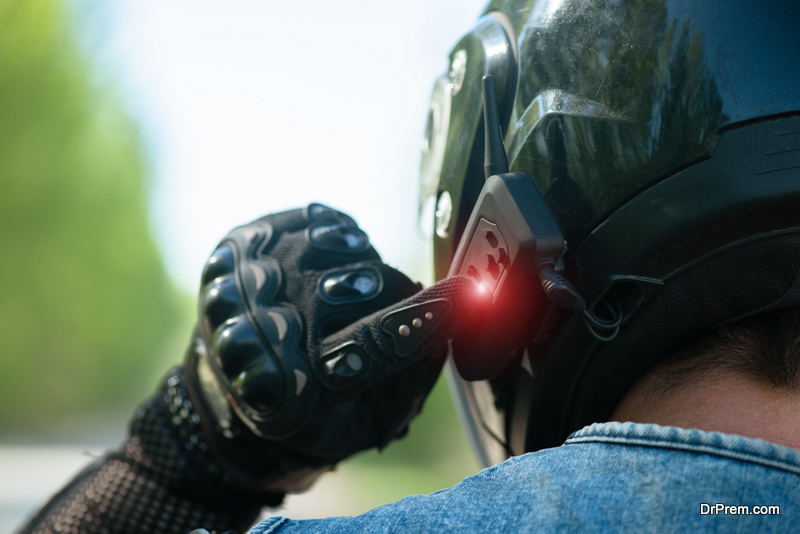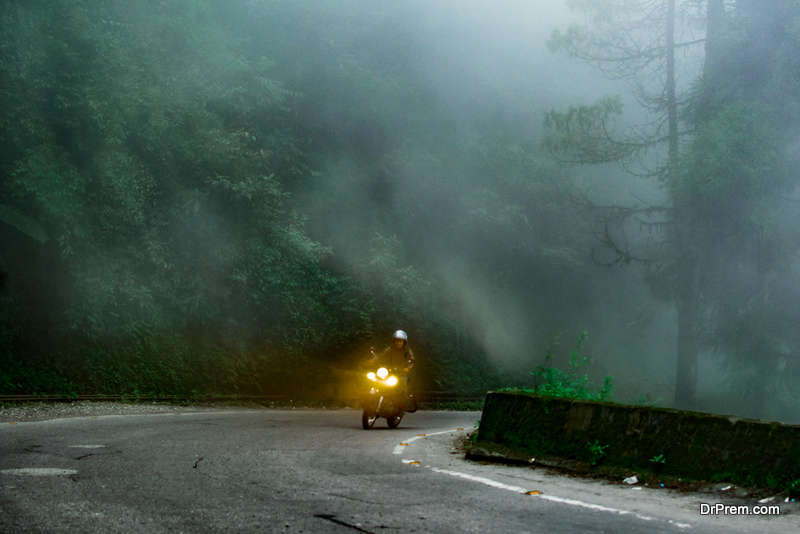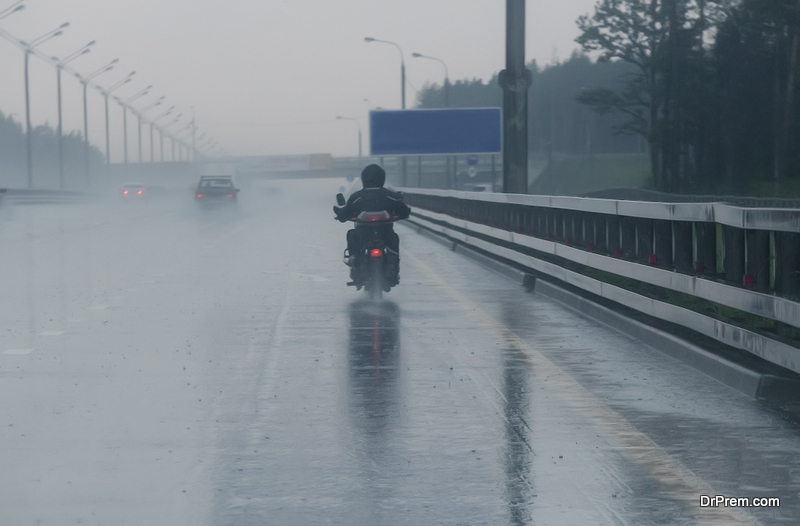Like anyone else on the road, motorcyclists encounter all kinds of conditions, from sunshine to rain to fog to snow. However, when it comes to fog, motorcyclists need to take extra care. Not only do you have to account for the fog obstructing your view, but you also need to remember that it obstructs the view of other drivers. Here are 12 essential safety tips for riding your motorcycle on a foggy day.
1. Prepare

Sometimes fog hits suddenly, and other times the weather calls for it. Either way, remember always to check the weather before you head out riding. Keep reflective gear on hand just in case the weather turns to fog. If you know it will be foggy, double down on the reflective clothing.
Double-check any luggage to make sure it’s strapped down and secure. Take along a trustworthy motorcycle communication system just in case you have to make any calls so you can communicate safely on the road.
To maximize visibility before a ride in the fog, make sure your helmet’s visor is clean. Use anti-fog agents if possible to help increase visibility throughout your drive.
If you’re riding to a familiar location, take the most easily navigated route possible. This can help you pay attention to the road and other drivers, rather than worrying about which way to turn.
2. Pay Attention and Take it Slow
When you ride in fog, pay attention and adapt to the conditions to maximize your safety. Ride more slowly because visibility is reduced, and it will be difficult to see what’s around the next bend in time at normal speeds.
Leave yourself plenty of time to react. Increase your following distance, just in case the person ahead of you has to slam on the brakes and use the taillights ahead of you as a supplementary guide to the road ahead.
Above all else, know when to call it quits. If the fog becomes too bad to continue, find a safe place to stop and wait for the fog to lift.
3. Scan the Road
Scan the road ahead of you constantly to be sure you’re prepared for any obstacles. Sometimes fog hits after a storm, which means that downed tree limbs, overturned trash cans or other obstacles could obstruct your path. Also, monitor your mirrors more frequently than you might otherwise on a clear day.
4. Maintain Your Lane
Due to the limited visibility, avoid changing lanes or crossing traffic. Speeding up to pass a slow-moving vehicle can be risky. You may not see a car coming the other way, especially a car with bad headlights. Instead, drop back and give the slow vehicle extra space.
Maintain your lane by keeping a close eye on the pavement markings on the side of the road. The center markings may reflect the light of oncoming headlights and become blinding. If someone is driving impatiently behind you, move over to the side of the road, pause and let them pass, rather than riding faster.
5. If You’re Riding in a Group, Communicate

If you’re riding in a group, keep each other safe and help each other negotiate any unexpected obstacles by staying in touch. Use a helmet intercom system to communicate with other riders in your group. This can help you alert other members of your group about aggressive drivers, worsening fog conditions ahead or let them know when you have to stop, as fog can easily hide riders paused on the side of the road.
6. Use Your Low Beams
Remember to use your low beams when riding in the fog. High beams will reflect off the moisture in the fog, worsening visibility. If a driver approaches in the opposite lane with high beams on, focus on the pavement markings on the outside of the road to avoid being temporarily blinded by the bright lights.
7. Tap on the Brakes
Tap on the brakes regularly to help alert other drivers and remind them of your presence on the road. The worse the fog is, the more you should tap on your brakes.
8. Use Emergency Flashers in Dense Fog
In dense fog, use your emergency flashers to alert other drivers to your presence and to make sure you take no one by surprise.
9. Don’t Speed Up Too Quickly

Even if it looks like the fog is lifting, don’t speed up. The fog might become heavy again around the next bend, making it difficult to see what’s in the road. Remember: Always leave yourself plenty of time to react.
10. Fill Up Your Tank
Before heading out for a ride in the fog, fill up your tank. You never know how bad the fog will get or if you’ll run into traffic due to accidents. This can decrease your gas mileage, and nothing’s worse than running out of fuel in bad weather.
11. Don’t Stop in the Road
Don’t stop in the middle of the road. If you have to pause due to a mechanical issue, pull off the road and stay a safe distance away from traffic. Park your bike somewhere safe and, if you have to wait for the fog to lift or for mechanical help to arrive, wait for help a safe distance away from your bike.
12. Let Someone Know Where You’re Going
Due to the safety concerns associated with riding in fog, it’s a good idea to alert a friend or family member about where you’re riding and when you expect to reach your destination. That way, if disaster does strike, at least help can reach you more efficiently.
Final Words
Driving in the fog is riskier than many other kinds of riding for motorcyclists because the road is obscured, and you have to watch out for hasty and impatient drivers. However, by following these 12 safety tips, you can make the most out of your experience and increase your confidence in hazardous conditions. This can make you a better overall biker and help you teach other riders how to stay safe.
Article Submitted By Community Writer




